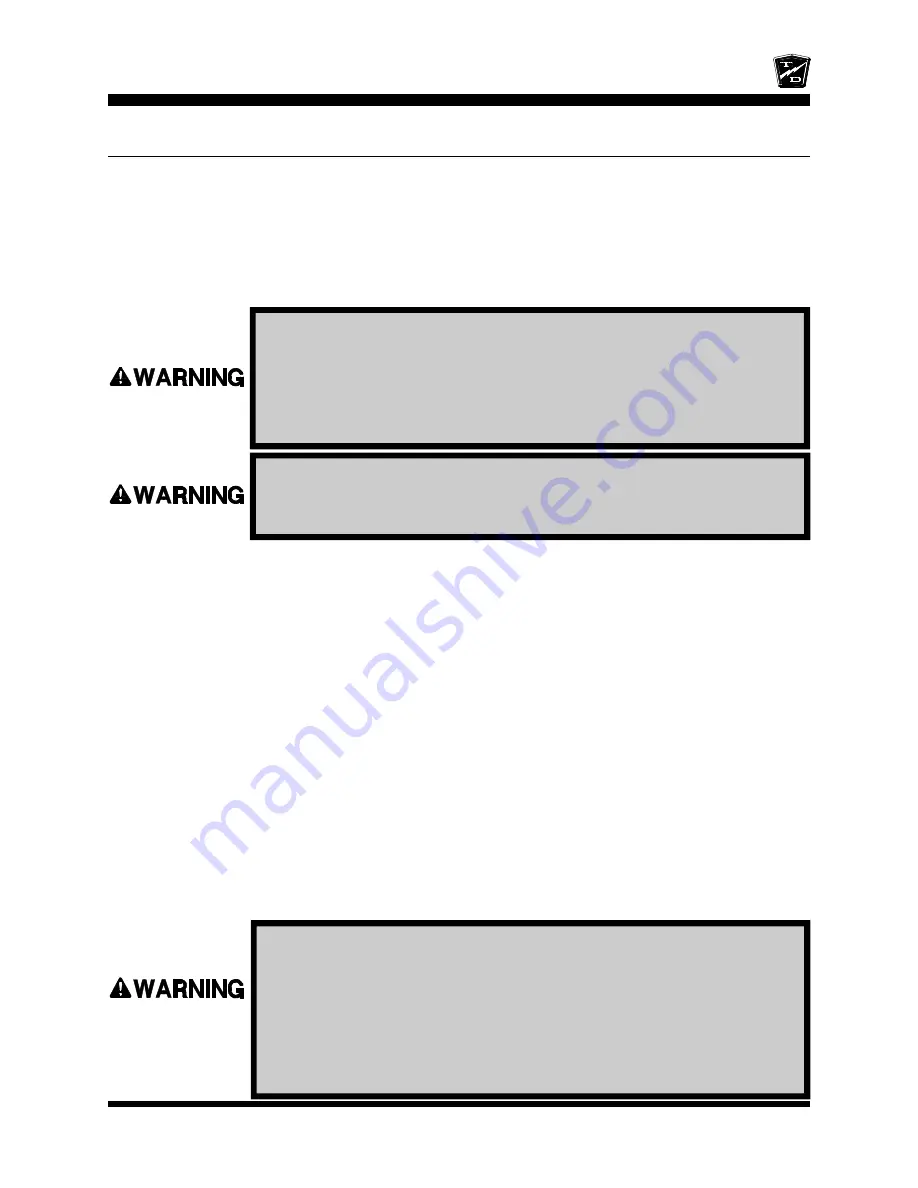
Safety Rules
Page 3
SAFETY RULES AND OPERATING INSTRUCTIONS
SAFETY RULES AND GUIDELINES
It is the responsibility of the owner of this vehicle to assure that the operator understands the various
controls and operating characteristics of this vehicle. As well as, obeying the following safety rules and
guidelines (extracted from the American National Standards Institute Personnel and Burden Carriers
ANSI B56.8).
These vehicles are designed for driving on smooth surfaces in and around facilities such as industrial
plants, nurseries, institutions, motels, mobile home parks, and resorts. They are not to be driven on
public highways.
1. Make sure the key-switch is in the “OFF” position, then remove
the key.
2. Place the forward-reverse switch in the center “OFF” position.
3. Set the park brake.
4. Place blocks under the front wheels to prevent vehicle movement.
5. Disconnect the main positive and negative cables at the batteries.
Before working
on a vehicle:
This vehicle is not designed to be driven on public roads or highways.
It is available in maximum designed speeds ranging from 7 to 15
mph. Do not exceed the maximum designed speed. Exceeding the
maximum designed speed may result in steering difficulty, motor
damage, and/or loss of control. Do not exceed locally imposed speed
limits. Do not tow at more than 5 mph.
•
Do not drive this vehicle unless you are a qualified and trained operator.
•
Keep all body parts (head, arms’, legs’) inside the vehicle while it is moving.
•
Drive slowly when making a turn especially if the ground is wet, slippery or when driving on an
incline.
•
This vehicle may overturn easily if turned sharply, driven at high speeds, or when on an incline.
•
Drive only on level surfaces or on surfaces having an incline of no more than 10% (5.6 degrees).
•
Do not drive over loose objects, holes, or bumps.
•
Observe all traffic regulations and speed limits (see speed warning above).
•
Keep to the right under normal conditions.
•
Maintain a safe distance from all objects.
•
Keep the vehicle under control at all times.
•
Yield right of way to pedestrians, ambulances, fire trucks, or other vehicles in emergencies.
•
Do not overtake another vehicle at intersections, blind spots, or other dangerous locations.
•
Keep a clear view ahead at all times.
Read and follow all of the guidlines listed below. Failure to follow
these guidelines may result in severe bodily injury and/or property
damage.
Summary of Contents for B 1-50
Page 2: ......
Page 6: ...TAYLOR DUNN ...
Page 14: ...Model B 1 00 ...
Page 30: ...TAYLOR DUNN ...
Page 36: ...TAYLOR DUNN ...
Page 52: ...TAYLOR DUNN ...
Page 66: ...Maintenance Service and Repair Steering Page 14 Exploded View of Steering Gear ...
Page 90: ...TAYLOR DUNN ...
Page 124: ...TAYLOR DUNN ...
Page 130: ...TAYLOR DUNN ...
Page 161: ...Wire Diagrams ...
Page 194: ...Illustrated Parts PARTS PAGE 10 Front Suspension 4 3 2 1 5 10 6 8 9 7 11 12 ...
Page 202: ...Illustrated Parts PARTS PAGE 18 Motor 2 3 5 6 4 7 8 1 9 10 Armature 9 ...
Page 206: ...Illustrated Parts PARTS PAGE 22 Wheels and Tires Ref wheel hub 1 2 5 assembly 4 3 6 7 8 9 ...
Page 208: ...Illustrated Parts PARTS PAGE 24 Instrument Panel dash ...
Page 217: ...Illustrated Parts PARTS PAGE 33 This page intentionaly left blank ...
Page 220: ...Illustrated Parts PARTS PAGE 36 Seat Cushions Deck and Lights B 1 50 ...
Page 222: ...Illustrated Parts PARTS PAGE 38 Seat Cushions Deck and Lights MX 1600 ...
Page 224: ...Illustrated Parts PARTS PAGE 40 Decals B 1 50 VIEW FROM INSIDE OF COWL 1 2 3 4 5 6 7 8 9 ...
Page 230: ...Illustrated Parts PARTS PAGE 46 Stake Sides B 1 50 1 2 3 4 5 6 7 8 ...
















































